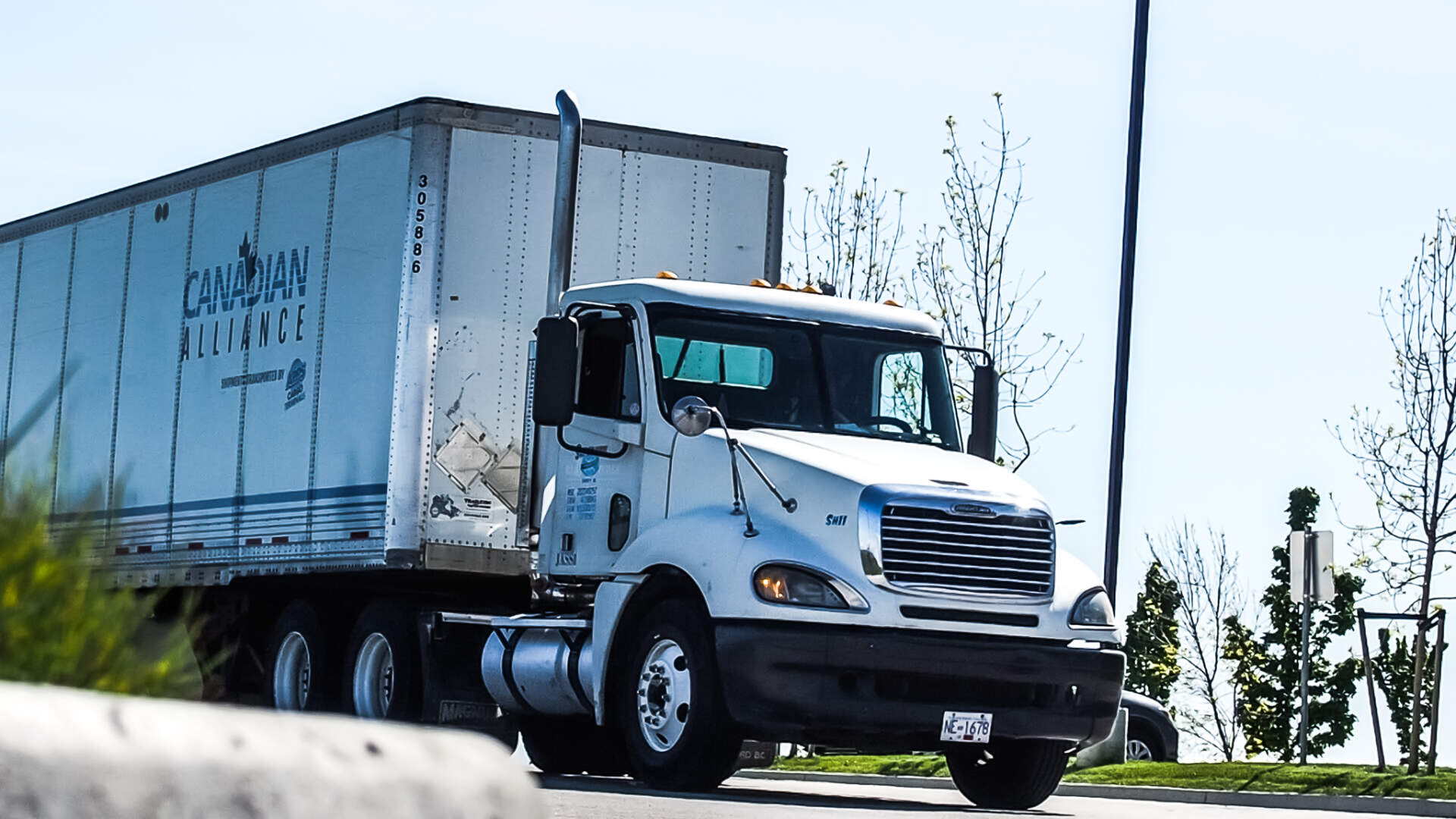
Questions about Canadian Transportation Authorities? Our team of professionals is here to help.
Why Should Businesses Understand Canadian Transportation Authorities?
Whether you’re importing raw materials, exporting finished products, or distributing goods across provinces, transportation is a critical component of your business operations. However, many companies underestimate the complexity of the regulatory framework that governs transportation in Canada.
From licensing and safety standards to freight permits and interprovincial regulations, Canadian transportation authorities shape every stage of the logistics journey. Understanding their roles isn’t just a matter of compliance—it’s key to avoiding costly delays, optimizing supply chain efficiency, and safeguarding your bottom line.
Are you confident your logistics operations align with federal and provincial transportation requirements?
Who Are the Key Canadian Transportation Authorities?
Canada’s transportation landscape is governed by multiple overlapping bodies at both the federal and provincial levels. Each plays a distinct role in regulating modes of transport, enforcing safety standards, and issuing operational permits.
Federal Authorities
Transport Canada
Transport Canada is the federal department responsible for developing regulations, policies, and services for transportation across air, marine, rail, and road modes. It oversees national safety standards, security protocols, and environmental regulations.
Key responsibilities include:
- Oversight of commercial vehicle safety standards
- Marine shipping and port security regulation
- Aircraft certification and air cargo safety
- Dangerous goods transportation regulation
- Infrastructure funding and planning support
Canadian Transportation Agency (CTA)
The Canadian Transportation Agency is an independent tribunal and regulator. It enforces compliance with transportation laws and regulations, resolves disputes, and issues licenses for air and rail carriers operating in Canada.
CTA is especially relevant to:
- Rail freight access agreements
- Dispute resolution between carriers and shippers
- Regulatory compliance for interprovincial transport
- Licensing for international freight carriers
Together, Transport Canada and the CTA set the federal framework that underpins much of Canada’s freight and logistics activity.
What Role Do Provincial Transportation Authorities Play?
While federal bodies govern interprovincial and international transportation, provincial transportation authorities regulate the day-to-day logistics operations within each province’s borders.
Examples of Provincial Bodies:
- British Columbia Ministry of Transportation and Infrastructure (MoTI)
- Alberta Transportation
- Ontario Ministry of Transportation (MTO)
- Société de l’assurance automobile du Québec (SAAQ)
These agencies issue trucking permits, regulate weight and dimension standards, manage regional highways, and enforce local safety laws.
For example, in the Vancouver Lower Mainland, commercial trucking routes must adhere to municipal bylaws and regional MoTI guidelines. Carriers operating near the Port of Vancouver must also comply with specific port access, environmental, and safety mandates.
How Do Canadian Transportation Authorities Regulate Trucking and Freight?
Commercial freight transportation is subject to a combination of federal and provincial rules. Companies that move goods across Canada must ensure compliance with the relevant authorities at every stage.
Key Areas of Regulation:
- Carrier safety ratings and audits (Transport Canada, provincial ministries)
- Hours of service and electronic logging devices (federal and provincial)
- Weight and dimension limits (provincial jurisdiction)
- Driver licensing and qualifications (provincial)
- Insurance requirements for cargo and liability (regulated by both levels)
- Special permits for oversized or hazardous loads
A common challenge for importers and exporters is understanding how these rules vary across jurisdictions. For instance, allowable truck weight in British Columbia may differ from neighbouring Alberta—affecting route planning and cost forecasting.
What Permits, Licences, and Documents Are Required for Compliance?
Operating legally within Canada’s freight and logistics landscape requires a suite of licenses, registrations, and supporting documents. These vary depending on geography, commodity type, and transport mode.
Common Requirements:
- Carrier operating authority from provincial transportation authorities
- Interprovincial Commercial Vehicle Registration (IRP)
- International Registration Plan (IRP) and International Fuel Tax Agreement (IFTA) for cross-border trucking
- Transportation of Dangerous Goods (TDG) certification (Transport Canada)
- Oversize/overweight permits (provincial)
- Commercial vehicle inspection certificates
Failing to secure the proper documentation can result in fines, shipment delays, or even vehicle seizure. Businesses can streamline compliance by partnering with logistics providers, such as Canadian Alliance Terminals, that manage regulatory alignment proactively.
How Do Canadian Transportation Authorities Maintain Safety and Efficiency?
Safety is the foremost concern of transportation regulators. Federal and provincial agencies work collaboratively to ensure that Canada’s freight infrastructure operates without compromising human life, public property, or environmental integrity.
Key Safety Programs Include:
- National Safety Code (NSC): A federal-provincial initiative that sets minimum safety standards for commercial vehicles.
- Commercial Vehicle Safety and Enforcement (CVSE): Active in B.C., this program inspects vehicles for roadworthiness and compliance.
- Fatigue Management Regulations: Monitored through electronic logging devices (ELDs), which are now mandatory for federally regulated carriers.
- Dangerous Goods Inspection Programs: Managed by Transport Canada for high-risk commodities.
Safety regulations are enforced through roadside inspections, audits, and carrier performance reviews. Shippers must ensure their logistics partners meet these standards to avoid liability or reputational risk.
How Do Transportation Rules Vary Across Provinces?
Uniformity does not exist across Canada’s provinces and territories. Regional differences in infrastructure, climate, and policy priorities mean that businesses must adapt to jurisdiction-specific transportation regulations.
Key Variations:
- Spring weight restrictions in provinces like Manitoba and Ontario
- Bridge clearance and urban access limits in Metro Vancouver
- French-language labelling and driver requirements in Quebec
- Carbon tax structures and green fleet mandates
Navigating these differences is a challenge, especially for companies operating in multiple regions. CAT helps clients interpret local regulations, reduce compliance risk, and optimize routing across the country.
How Should Businesses Prepare for Compliance Audits or Inspections?
Canadian transportation authorities have the right to inspect vehicles, facilities, and documentation to ensure compliance. Being audit-ready protects your business from penalties and delays.
Audit Preparation Checklist:
- Ensure vehicle maintenance logs are complete and up to date
- Maintain accurate records of driver certifications and licensing
- Store ELD and TDG data for the required retention period
- Review safety ratings regularly through provincial authority portals
- Conduct internal mock audits or use a compliance consultant
Partnering with a compliant logistics provider is a strategic advantage. At CAT, regulatory readiness is embedded into every operational process—from warehousing to final-mile delivery.
Are Your Transportation Practices Aligned with Canadian Regulations?
If you manage logistics internally or rely on third-party providers, consider these self-assessment questions:
- Do you know which Canadian transportation authorities oversee your lanes?
- Are your freight carriers fully licensed and safety-rated?
- Are you meeting both federal and provincial compliance standards?
- Is your team trained in Transport Canada documentation requirements?
- Do you regularly audit your operations against regulatory checklists?
Uncertainty in any of these areas may indicate a gap in your risk management strategy.
Final Thoughts: Knowledge of Canadian Transportation Authorities Is a Business Asset
Regulatory complexity is not going away. For importers, exporters, and manufacturers, understanding Canadian transportation authorities is a business-critical function that directly influences cost, efficiency, and safety.
By aligning your logistics processes with the expectations of Transport Canada, the Canadian Transportation Agency, and relevant provincial transportation authorities, you reduce risk, improve service reliability, and gain a competitive edge.
Canadian Alliance Terminals supports businesses across Canada in navigating the complexities of compliance, documentation, and transport planning. Whether you’re expanding into new markets or refining your current operations, our team is here to guide you.
Contact Canadian Alliance Terminals today to learn how we can support your transportation and logistics goals—safely, efficiently, and in full compliance.
